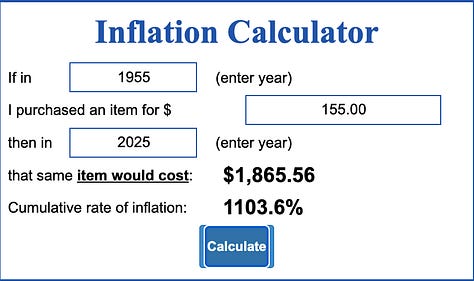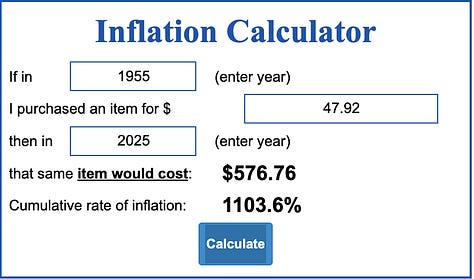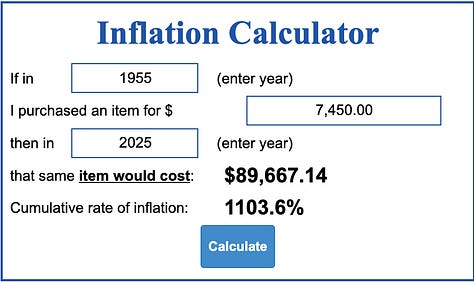Tariff Supporters Get Everything Wrong
When the facts don't match the fantasy, they double down on the fantasy.
Not too long ago, Trump said he loves the uneducated. Makes sense. They don't follow along when he contradicts himself, and they're emotionally invested enough to ignore the consequences of his actions and continued lies.
Case in point: the response to my EU trade deal article. Instead of grappling with the reality that tariffs are taxes on American consumers, supporters retreat into mythology. “Just buy American!” As if that solves anything.
Let me address some of the claims here and why clinging to mythology makes the tariff scam even more profitable for those running it.
Myth #1: “Americans Can Avoid Tariffs by Buying American"
Only 11% of goods bought by U.S. consumers are made in America by American companies. That's everything labeled “Made in USA”, qualified or otherwise.
Since 2009, domestic production has declined from 65% to less than 20% of global manufacturing. We don't make things here anymore because it's more profitable to make them elsewhere.
But here's the kicker: truly 100% American-made goods, with no foreign parts, and no foreign labor, are vanishingly rare. The Federal Trade Commission requires that “all or virtually all” components and processing be U.S.-based. Even products with 5% foreign input can be considered deceptive advertising (Federal Trade Commission).
Category by category breakdown:
Clothing: 2-3% made domestically
Shoes: 1% domestic
Toys: Less than 1% U.S.-made
Electronics: Virtually none without foreign components
Vehicles: Only 45% of cars sold in the U.S. are assembled here, and most still contain foreign parts
So when someone tells you to “buy American” to avoid tariffs, they're telling you to shop in a store that basically doesn't exist.
Myth #2: “Foreign Goods Are Cheap Junk Anyway”
This is rich coming from people typing on smartphones made in China, driving cars with parts from Mexico, wearing clothes sewn in Bangladesh or Vietnam.
The “foreign goods are junk” myth conveniently ignores that American companies deliberately moved production overseas to maximize profits. Apple didn't manufacture iPhones in China because Chinese engineering is inferior; they did it because Chinese labor is cheaper and regulations are looser. Also, when you look at the latest advances in Chinese technology, the U.S. is beginning to look a bit dated.
Meanwhile, “American-made” often means “assembled in America from foreign parts with foreign materials.” That Ford truck? The engine block might be cast in Mexico, the electronics from South Korea, and the steel from Brazil. But slap it together in Michigan and call it American-made. The world of supply chains is interconnected.
Myth #3: “The EU Was Tariffing Us and We Got Nothing”
Before Trump's trade war, the average tariff rate on European imports was 1.4%. European tariffs on U.S. exports were roughly 1%. Both sides had sector-specific higher rates on certain products, such as agriculture, vehicles, and some textiles.
Now? We've imposed 15% tariffs on European goods across the board. That's escalation, not collaboration. And guess who pays those tariffs? Not European companies. American importers, who pass the cost to American consumers.
To Trump, it’s never been about fairness, but about creating the appearance of toughness while systematically robbing American wallets.
Myth #4: “Tariffs Pay Down the Debt Instead of Taxing Americans”
This might be the most economically illiterate claim of all.
Here's how tariffs actually work:
Goods arrive at U.S. customs
The American importer pays the tariff to the U.S. government
The importer either absorbs the cost (reducing their income) or passes it to consumers (raising prices)
Usually, they split the difference with some price increases, some reduced topline revenue.
The result: American consumers pay more at checkout, American businesses invest less in workers and expansion, and the government collects revenue by taxing the American buyer.
It's a consumption tax that disproportionally hits working families hardest because they spend a higher percentage of their income on goods rather than services.
Myth #5: “Tariffs Worked Before 1955”
The “good old days” argument ignores everything that's changed about the global economy in the past 70 years.
Yes, in 1955, the average family income was $4,200, and you could buy a house for $7,450. But that same house, based on inflation, would cost $90,000 in today's dollars, and median home prices are now over $400,000 in actual value.
What changed wasn't trade policy. What changed was:
Financialization of housing through REITs and private equity
Reagan-era deregulation that let Wall Street speculate on basic necessities
Wage stagnation while costs soared
The deliberate dismantling of unions and worker protections
Tariffs didn't create middle-class prosperity in 1955. Strong labor unions, high marginal tax rates on the wealthy, and massive public investment in infrastructure did.



The Real Function of These Myths
The way we arrived at these beliefs isn’t accidental. Those are the outcomes of years of engineered messaging (propaganda) to make millions of Americans grateful for their own setbacks.
The “Buy American” and Tariff mythology serves two purposes:
It masks an additional tax on Americans, benefitting the US Government and shareholders
The goal isn't to bring manufacturing back. The goal is to extract maximum revenue from American consumers while making them feel patriotic about it.
Why Facts Don't Matter
The frustrating reality is that Trump supporters are emotionally invested in these and other myths because they solve a psychological problem: how to feel powerful in an economy designed to make them powerless. How to feel superior in a world that makes them feel as if they’re just another cog in the wheel. And how to maintain their white supremacy, considering that the White demographic will no longer be the leading demographic by approximately 2045.
“Buy American” and “they’ll pay tariffs” feel like agency. Blaming foreign countries feels like patriotism. Supporting tariffs feels like fighting back.
The reality, though, that American corporations moved production overseas for profit, that tariffs are taxes on American consumers, that trade wars make everyone poorer, that is too depressing to accept, while it would also tear the “MAGA” mask off Trump’s face.
So, before they lose their identity, they retreat into fantasy. And the people profiting from tariffs are happy to encourage that fantasy, because it makes the scam sustainable.
Quo Vadis?
The issue with Trump supporters, and MAGA in general, is that they are evidence-proof, agnostic to realism, and firmly committed to taking a bullet for their guy. The Trump mania is cult like in conviction and intervention proof.
There is no convincing them with facts, figures, logic, and evidence. The only time they’ll come around is when they are getting hurt. Either directly, or by proxy, when someone they love is feeling the impacts of Trump. Even then, though, I’ve seen and heard of numerous families who should love one another, who have fallen apart, because some family members chose Trump over their own.
This presents us with a difficult challenge. Do we continue to try to reach them, teach them, and hope to convince them that they’ll get hurt for someone who couldn’t care less about them? Or is their racism, religiosity, and love for an alleged pedophile stronger than their will for self-preservation?
At some point in the not-so-distant future, when we hit the end of the line, we’ll either find a way to come together, recognizing that the 1% are the enemy, or we’ll come after each other. Perhaps, the truth will be some blend of the above. No matter what, though, to get out of the harm that we’ve put ourselves in, it is likely that lives will be lost.
###
Z.










Lives must necessarily be lost and thousands given serious jail time if you have any chance of saving your fast sinking ship of Democracy. To outsiders, your judicial and electoral systems now look permanently crippled. Creeping christo fascism is a cancer upon your society. A new revolution seems needed. History teaches that only military invasion or civil war is necessary to defeat such evil.
The idea that made in America products are better! Tell use you haven’t traveled without telling us you haven’t traveled.
Pyrex is the best example I can think of. The U.S. company licensed its name to another manufacturer. New manufacturer didn’t temper the glass properly to reduce costs. This product didn’t meet European standards so they couldn’t sell in Europe. The original manufacturer now produces the superior product for Europe, but here in the US we get the substandard product. You can recognize it by its poorly fitting lids and tendency to explode in your oven. If that isn’t obvious enough, the quality product has PYREX in all capital, block letters. The US product is all lower case in a more stylized font.
Let’s be honest, when people talk about the inferiority of imports, they mean Asian. They are also limiting their experience to super cheap crap that couldn’t possibly be made well at that price. I believe the best thing for our planet is if we all learn to quit buying all of this cheap, throwaway junk. But then, I also celebrate high gas prices because I think we waste an enormous amount of gas in this country.